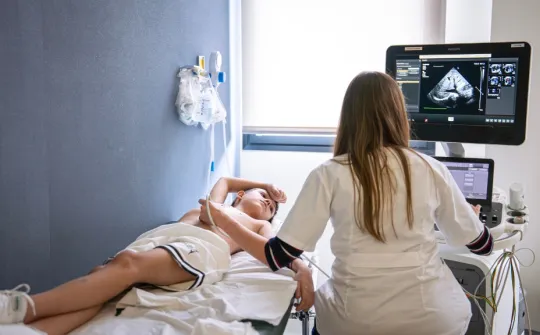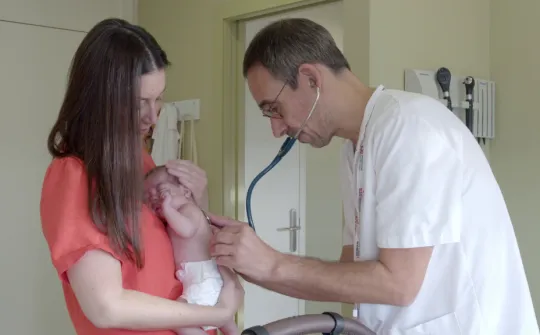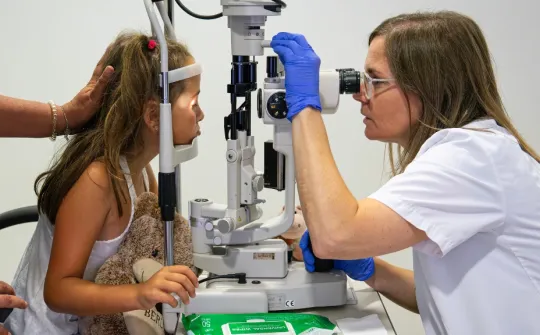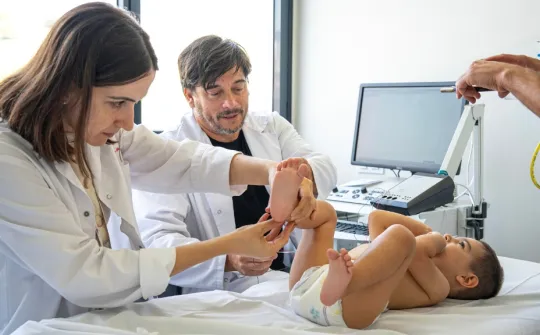The SJD Barcelona Children's Hospital conducts isobaric hypoxia tests on patients with severe cardiorespiratory diseases who need to travel by plane
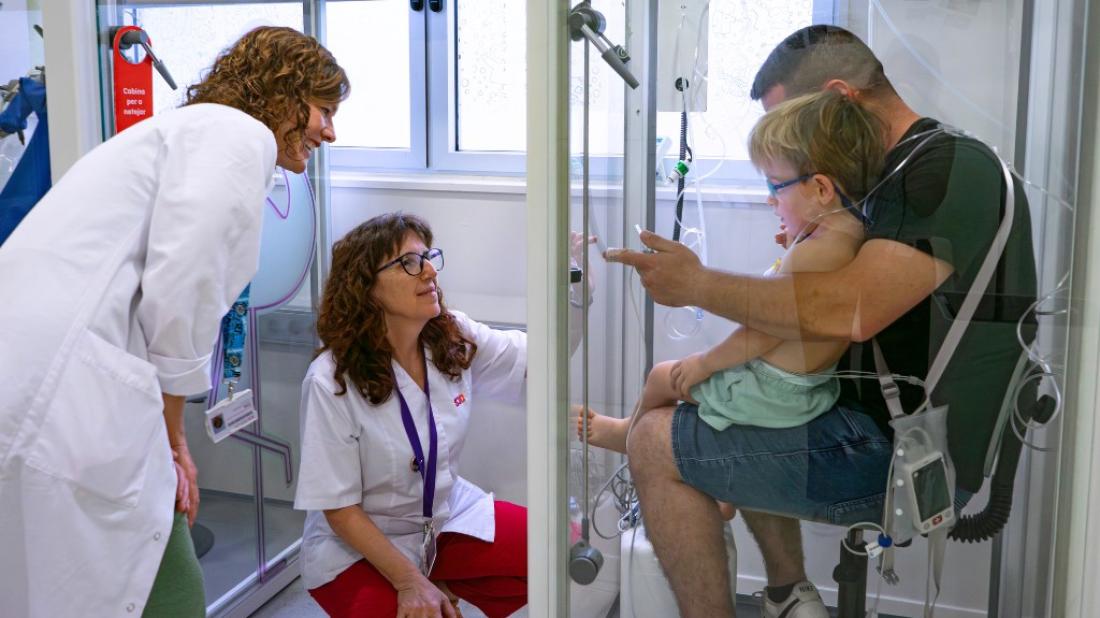
The hospital has a simulation cabin where they can recreate hypobaric atmospheric conditions that occur during plane travel. The aim is to carry out controlled-exposure sessions with the patient and prescribe preventative treatment if needed.
People with severe cardiorespiratory diseases are at higher risk of suffering from respiratory failure when travelling by aeroplane due to the reduced atmospheric pressure. Despite the pressurisation systems built into aeroplanes, as the aircraft increases altitude, the quantity of oxygen in the air decreases drastically to just 15% (sea level is around 21%).
For most passengers, this change poses no health risk, but it carries an increased risk for patients with certain diseases and conditions, such as children with severe pneumopathies or complex cardiopathies. A drop in pressure can destabilise them and cause respiratory failure, which can then lead to a medical emergency.
To reduce or help mitigate this risk, the SJD Barcelona Children's Hospital—the hospital that treats the greatest number of children with rare, complex diseases in all of Spain—has been using specialised cabins over the last few months to conduct controlled-exposure sessions with these children before their journey. The cabin simulates the hypobaric, low-pressure environment that occurs during air travel.
The intermittent hypoxic training (IHT) sessions conducted in this cabin allow staff in the Pulmonology Department to determine the level of risk of a patient suffering from respiratory failure during their journey, and if needed, prescribe the preventative measures required to avoid it.
‘We are treating more and more patients from outside of Catalonia, and it is important to be able to guarantee that these children can travel home in the safest conditions possible. Likewise, we have many Catalan patients who travel by plane when going on family holidays. That is why, for some patients with severe pneumopathies and complex cardiopathies, we consider it pertinent to conduct a preventative assessment to optimise their routine treatment, weighing up whether there are any contraindications, and evaluating whether they may need oxygen therapy during their flight,’ explains Isabel Gascón, the staff member in charge of conducting these tests.
Intermittent hypoxic training cabin at SJD
The transparent plastic cabin is fully sealed, with two routes for nitrogen and oxygen to be pumped in. Once the patient is inside the cabin—accompanied by a parent in cases of newborns or very young children—and is comfortable, staff open the nitrogen tap until oxygen concentration reduces to 15%. During the 20-minute test, the patient's respiration rate, heart rate and oxygen saturation are all monitored (and also the parent, if they are present).
If the patient’s oxygen saturation levels fall below 90% for one to two minutes, staff will administer oxygen through nasal tubes at the supplementary dosage required to reach around 94% saturation.
Once the intermittent hypoxic training test is finished, staff will provide the family with a medical report that they can give to the airline. This report ensures that the airline has the resources available and ready to administer should the child need oxygen therapy during the flight.
So far, around ten patients have undergone the isobaric hypoxia test at the SJD Barcelona Children's Hospital.
